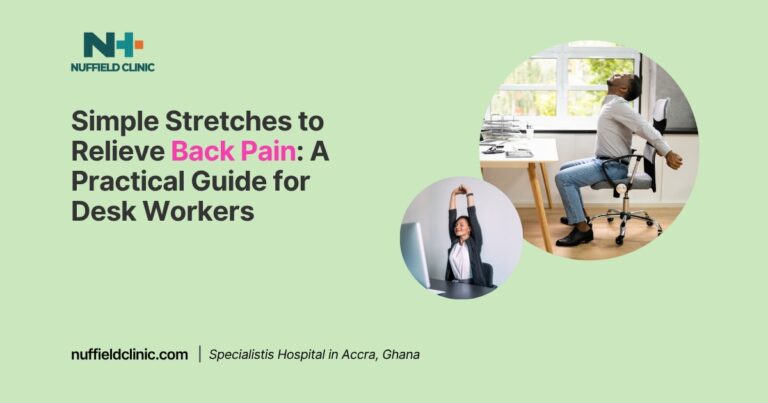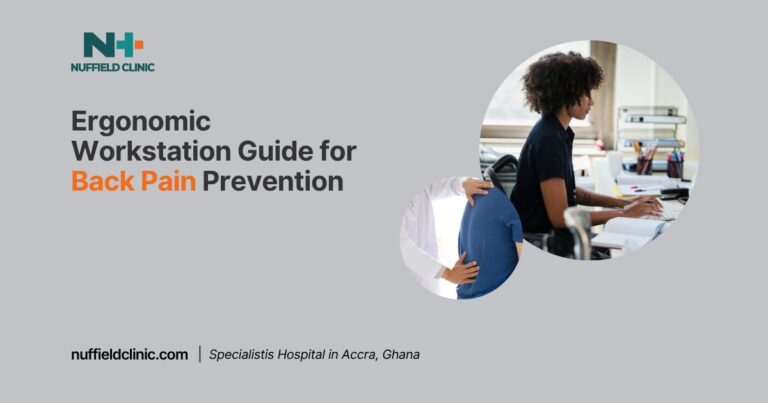Non-Surgical Treatments for Back Pain: A Specialist Guide

Besides surgery, what are your options in treating back pain? What advice do our specialist orthopedists give to patients experiencing back pain? Chronic back pain is one of the most common causes of disability in adults, affecting mobility, sleep, and overall quality of life. For many individuals, surgery is not the immediate or best option because of its risks, recovery period, and costs. Non-surgical treatments for back pain are usually the first line of care, aiming to reduce discomfort, restore function, and help patients return to daily activities.
In this article, I draw on more than two decades of clinical experience and examine diagnostic approaches, professional medical treatments, and self-management strategies, alongside current evidence about their effectiveness.
Understanding the Impact of Chronic Back Pain
Musculoskeletal disorders, including those leading to chronic back pain, affect millions worldwide and remain a leading cause of work-related disability. Because the back supports essential functions such as walking, bending, and lifting, persistent pain can make routine activities difficult. Over time, it can also contribute to muscle weakness, poor sleep, and reduced independence.
Diagnostic Approaches
Effective treatment depends on accurate diagnosis. Clinicians begin by examining a patient’s ability to sit, stand, walk, and lift the legs while also assessing pain intensity and its effect on daily life. If required, diagnostic tests may include:
- X-rays, which detect fractures and arthritis, but cannot assess nerves or soft tissue.
- MRI or CT scans which provide detailed images of discs, nerves, ligaments, muscles, and surrounding tissues.
- Blood tests, useful in ruling out infection or systemic disease.
- Electromyography (EMG) measures electrical activity in nerves and muscles to confirm nerve compression from conditions such as spinal stenosis or herniated discs.
Professional Non-Surgical Treatments
A wide range of nonsurgical medical treatments is available to manage back pain.
Physical therapy is often prescribed to stretch tight muscles, increase flexibility, and build strength. Techniques may include hands-on manipulation, massage, and tailored exercise programs designed to reduce recurrence.
Chiropractic care offers two main approaches. Spinal manipulation realigns the vertebrae to relieve pain caused by misalignment, while spinal decompression uses motorised traction to stretch the spine gently, reducing disc pressure.
Acupuncture involves inserting fine needles into specific points on the body. Evidence suggests it can trigger endorphin release and improve circulation around irritated nerves, making it a low-risk option for some patients.
Transcutaneous Electrical Nerve Stimulation (TENS) delivers mild electrical pulses to disrupt pain signals before they reach the brain. It may also relax muscles and encourage natural pain relief through endorphins. However, it is not appropriate for patients with implanted devices such as pacemakers.
Heat therapy is another common approach. Applying heat increases blood flow, supports tissue healing, and helps reduce stiffness. Options range from hot baths and heating pads to topical capsaicin creams. Patients with open wounds, inflamed skin, or certain cardiovascular conditions must exercise caution.
Medications can also play a role. Over-the-counter NSAIDs such as ibuprofen or naproxen reduce pain and inflammation. If these are insufficient, doctors may prescribe stronger NSAIDs, muscle relaxants, topical creams or patches, and in select cases, narcotics for short-term use. Some antidepressants, particularly duloxetine and tricyclic types, have also shown benefits for chronic pain. Cortisone injections around the spinal cord may relieve inflammation for several weeks, especially when pain radiates down the leg. In certain cases, radiofrequency ablation or implanted nerve stimulators can be used to interrupt pain signals more directly.
Self-Management and Lifestyle Strategies
In many patients, lifestyle changes form the foundation of lasting relief. Maintaining activity is essential, as immobility weakens back muscles and prolongs recovery. Low-impact activities such as walking or swimming are strongly encouraged.
Stress management is equally important, since psychological strain can increase muscle tension. Massage, yoga, meditation, and social interaction all support relaxation and reduce the physical impact of stress. Consistent, restorative sleep is also crucial, with adults advised to aim for at least seven hours per night.
Weight control reduces strain on the spine and helps prevent further degeneration of discs and joints. Nutrition should focus on whole grains, lean proteins, fruits, vegetables, and reduced intake of added sugars and fried foods. An anti-inflammatory diet is particularly recommended, as chronic inflammation can intensify back pain.
Even footwear can influence spinal alignment. Supportive shoes help maintain proper posture, while high heels are known to increase lower back strain. Similarly, adjusting sleeping position can protect the spine, with side-lying postures supported by a pillow between the knees or lying on the back with a pillow beneath the knees being preferable to stomach sleeping.
Assessing Effectiveness
While many non-surgical treatments for back pain are widely used, recent research raises questions about their effectiveness. A pooled data analysis published in BMJ Evidence-Based Medicine suggests that only around one in ten commonly recommended options provides meaningful benefit. For acute pain, NSAIDs were the only treatment consistently more effective than placebo. For chronic pain, exercise, spinal manipulation, antidepressants, and certain receptor-targeting drugs showed small but measurable improvements.
Other treatments, such as acupuncture, massage, TENS, and muscle relaxants, lacked strong evidence for chronic conditions. Researchers stress the need for high-quality trials to clarify the real-world impact of these therapies.
When to Consider Surgery
Non-surgical methods should be attempted first, but in some cases, surgery may be necessary. Patients experiencing worsening muscle weakness, severe pain radiating into the leg, or unrelieved symptoms despite sustained treatment should discuss surgical options with their healthcare provider. Herniated discs and spinal canal narrowing are common reasons surgery is considered.
So non-surgical treatments for back pain form the cornerstone of care for most patients, offering a combination of medical, physical, and lifestyle strategies to reduce discomfort and improve function. While the evidence indicates that benefits can be modest, they remain essential before considering more invasive procedures. With a careful diagnostic process, individualised treatment plan, and ongoing self-management, many individuals achieve meaningful improvements without surgery.
You can take a look at the following frequently asked questions on non-surgical treatment for back pain;






